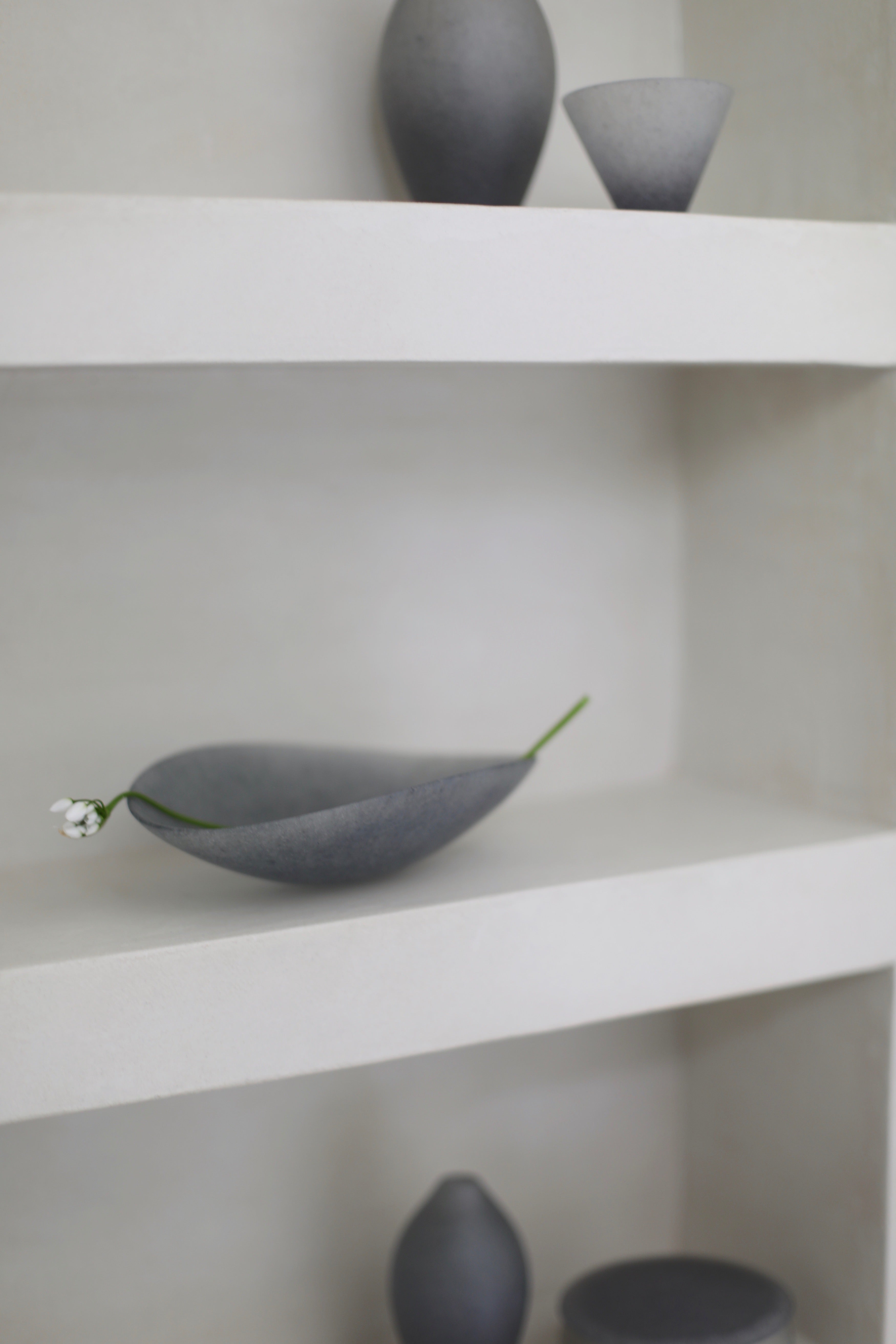Can you tell us a bit about how your ceramic practice began?
I have always been interested in art, colour and form and I like to work with my hands. I studied art at university and worked for many years with other people's art. A potter had a workshop where we coiled round-bottomed pots that we fired in an outdoor fire, an older variant of saggarfire. A few years later I bought a package of clay and started working from home. Reading books and experimenting. Since 2006 I have shared a studio with some other potters in central Stockholm.


How do your surroundings inform your work?
I think I am inspired from within, from my travels, all museums I have visited, all contemporary art you see. All result in my work in my own way.
What is the most enjoyable part of your process?
It is to shape the objects, to find the balance of each piece, to cooperate with the clay. The clay has such fantastic properties and if you work slowly and do not try to speed up the process, you can do everything with the clay.
What about your work and you (your life and experiences) are unique in contemporary ceramics?
That I make everything by hand with simple tools and that I never wheel throw. I do not use glazes but work with the clay's own colour and properties and process the surface.


How do you approach achieving the perfect balance in your work?
I work slowly and feel forward. I do not take orders/commissions because I do not want to decide in advance the finished dimensions of the vessel.
Who and what are your biggest influences?
It's probably a mixture of everything I've looked at over the years, the pottery around the Mediterranean (Greek and Egyptian in particular). The Pueblo Indians' shapes and surface treatments of the clay have inspired me a lot. The irregularity in nature and of course the wabi sabi concept.


What are the most exciting and daunting elements as the finished piece is revealed after firing?
In smoke firing, it is to see how the fire has made an impression on the surface.
In what ways do you continue to move your practice forward and experiment?
I experiment all the time, I do not want to work with the same shape several times in a row. All my vessels are different.


